Archviz Demystified: Mastering the Art of Architectural Visualization

3D agora
May 14th, 2024

Architectural visualization, or ‘archviz’, is an essential tool that brings yet-to-be-built spaces to life, merging art with technology. This article uncovers the integral role of archviz in the design process, detailing the expertise required for creating lifelike renderings and the impact of evolving technologies in the field. Without committing to overcomplicated technical jargon, expect to find insights into popular software, career considerations, and futuristic trends setting the stage for professionals and enthusiasts alike.
Exploring the World of Archviz
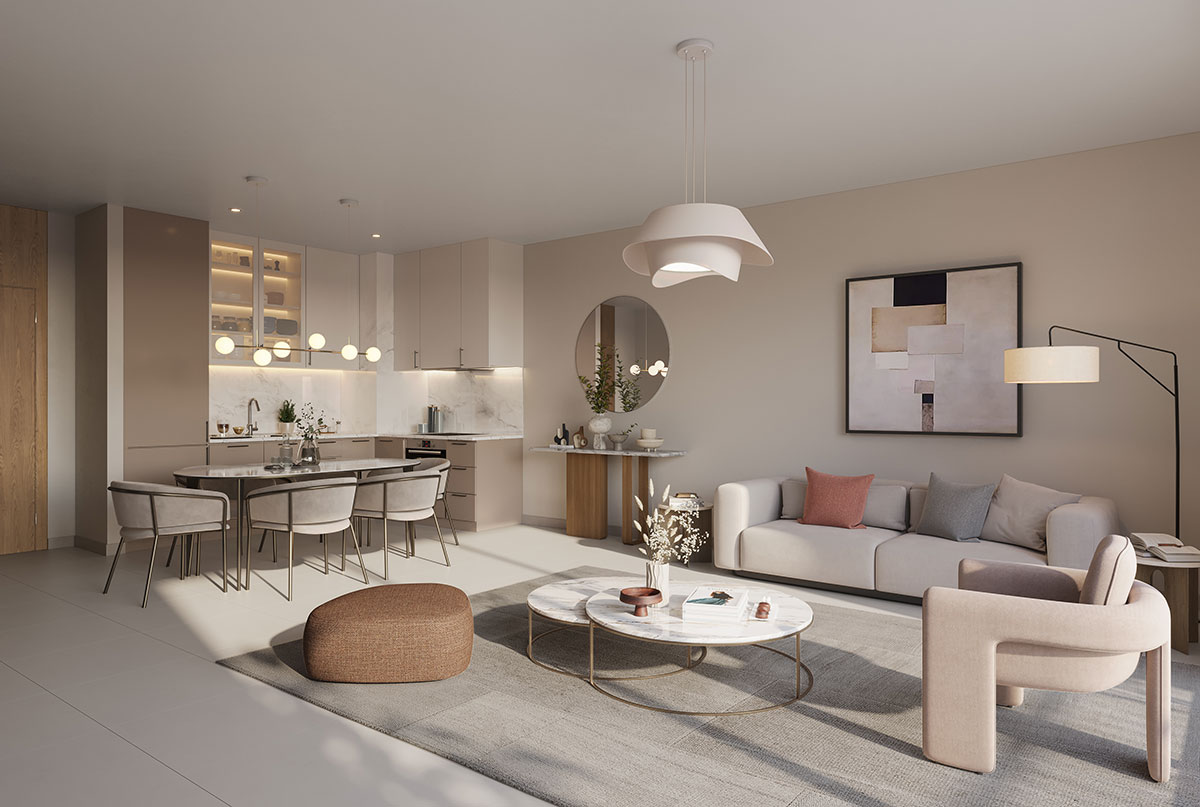 Created by Arqsix
Created by Arqsix
Architectural visualization, a term that encapsulates the fusion of art and architectural acumen, is a cornerstone of the design process. This discipline melds architectural flair with cutting-edge technology, enabling artists to depict architecture in its full glory, well before the first brick is laid. The arch viz artist, a professional whose expertise is increasingly sought after, is the visionary who translates abstract ideas into concrete visualizations that resonate with clients and stakeholders alike.
As we explore this world, let us consider:
The drawing skills foundational to this craft
The essential role of visual thinking
The ways in which archviz enriches the architectural journey from concept to construction.
The Definition of Architectural Visualization
Architectural visualization is the art and science of crafting digital representations of proposed architectural projects. Utilizing specialized software, these visualizations range from two-dimensional graphics, such as sketches and diagrams, to fully immersive three-dimensional models that incorporate textures, lighting, and even virtual reality.
Presenting architectural designs in various formats, archviz serves as a visual language that brings an architect’s vision to life. It allows clients to experience the proposed spaces in a compelling and tangible way. Archviz can be presented in various formats, including:
Physical prints
Dynamic videos
3D renderings
Virtual reality experiences
These different formats help to create a more immersive and realistic representation of the architectural design.
Arch Viz Artist: A Profession on the Rise
In the architectural industry, the arch viz artist is a luminary, bridging the gap between conceptual designs and visual reality. These professionals, armed with a repertoire of skills like 3D modeling, rendering, and an acute understanding of lighting and composition, are vital from the very inception of a project. They work in concert with architects, wielding tools like 3ds Max and V-Ray to produce photorealistic renderings that embody the intended design.
Beyond visualization, arch viz artists contribute to asset libraries, provide design insights, and continuously develop new techniques, thereby shaping the industry’s future.
The Intersection of Art and Architecture
At the intersection of art and architecture lies the domain of the arch viz artist, a professional who melds architectural flair with creative expression to convey the essence of interior design. These visualizations are not merely artistic renditions but strategic marketing tools, allowing realtors to captivate potential clients with lifelike renderings that forge emotional connections with properties yet to be realized.
Through this alchemy of technology and artistry, architectural visualizations become powerful narratives that enhance functionality and aesthetic appeal, while fostering a deeper understanding of architectural concepts.
The Creative Freedom in Archviz
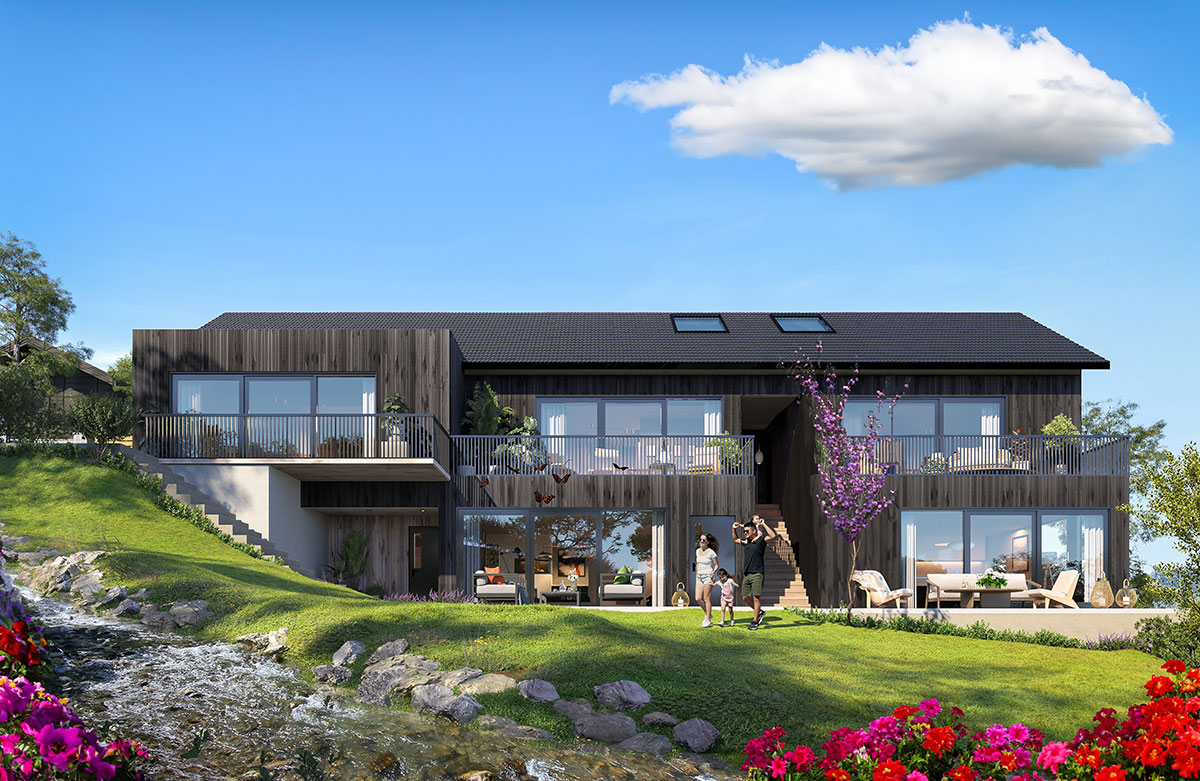 Created by Arqsix
Created by Arqsix
The canvas of architectural visualization is vast and varied, offering arch viz artists the creative freedom to experiment with textures, lighting, and stylized elements. This creative market is where technical skill meets artistic vision, allowing for visualizations that not only represent architectural designs but also carry an artistic signature.
The blend of creativity with advanced 3D software tools such as 3ds Max and V-Ray enables artists to translate architectural concepts into immersive experiences that captivate and inform.
From Concepts to Virtual Reality
Virtual reality (VR) is transforming the landscape of architectural visualization, offering a sense of presence and scale that traditional mediums cannot match. Architects and clients alike can don VR headsets to step inside virtual models, experiencing the design in a fully immersive environment. This technology not only facilitates a more profound understanding of spatial concepts but also serves as a sandbox for detecting design issues early in the process, ensuring that the final construction is error-free and meets the highest standards.
The Role of Interior Design in Visualization
Interior design within architectural visualization is crucial, as it provides an additional layer of realism and emotional depth. By infusing interior spaces with lifelike textures, furniture, and décor, arch viz artists influence the perceived atmosphere and functionality of a design. This attention to detail helps viewers to better understand and connect with the space, highlighting the importance of interior design in creating a complete and authentic visualization.
Embracing New Dimensions with 3D Software
3D software stands at the forefront of architectural visualization, enabling the creation of detailed and accurate representations of architectural designs. Tools like 3ds Max and V-Ray are indispensable for articulating complex scenes, rendering high-quality visuals that showcase the full potential of a project.
Additionally, software like Lumion complements the archviz toolbox with its rapid rendering capabilities, catering to the need for swift yet striking design presentations.
The Technical Backbone of Archviz
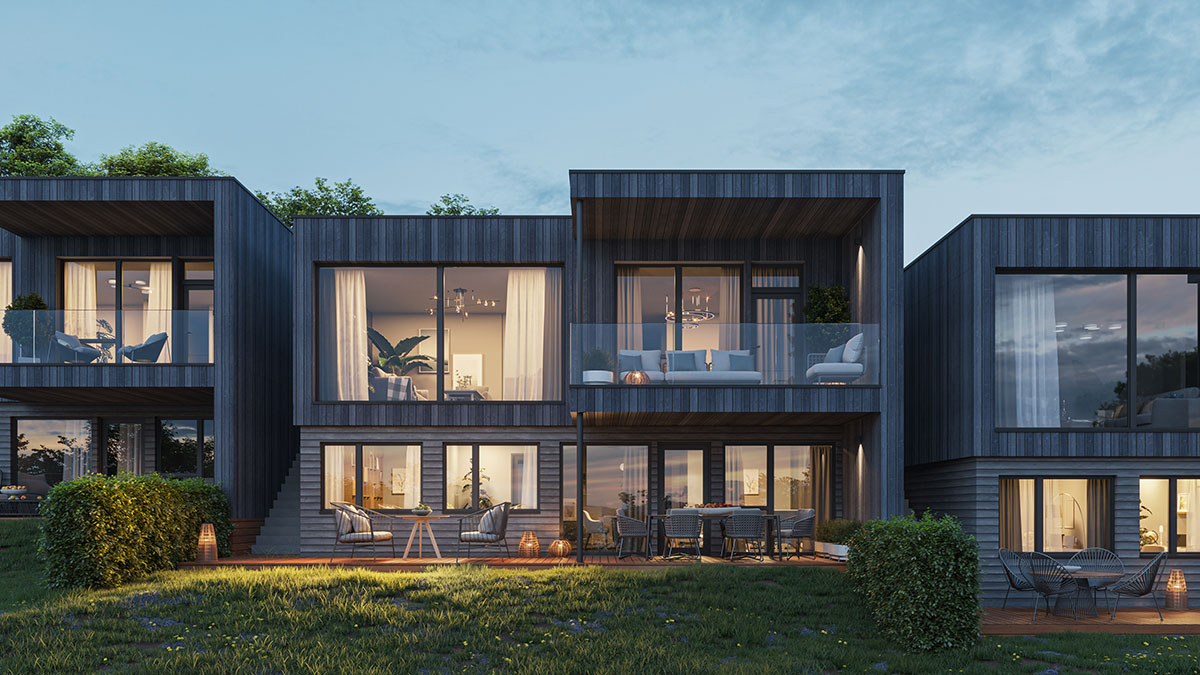 Created by Arqsix
Created by Arqsix
The technical backbone of archviz is a composite of sophisticated software and rendering techniques that are essential for producing high-fidelity visualizations. From the initial modeling stages in AutoCAD or Revit to the detailed rendering in 3ds Max and Blender, each step in the visualization process is supported by advanced hardware capabilities.
Post-processing tools such as Photoshop further enhance the realism and impact of the final images, showcasing the technical know-how that underpins the art of architectural visualization.
Mastering 3D Software and Rendering Techniques
Mastering 3D software and rendering techniques is paramount for any arch viz artist. The key skills and tools for arch viz artists include:
3D software like 3ds Max and Maya, which allow artists to create realistic visualizations
Rendering engines like V-Ray, which simulate light interactions and enhance the realism of the visualizations
A keen artistic sense, which ensures that material properties and ambiance are represented accurately
An understanding of design and approval processes, which contributes to the efficiency and efficacy of the work.
By developing these skills and using these tools, arch viz artists can create stunning visualizations that bring designs to life.
The Science of Textures and Materials
Textures and materials are the fabric of architectural visualization, imbuing models with the textures and reflections of real-world surfaces. The strategic use of lighting accentuates these materials, adding depth and enhancing the three-dimensional effect.
Furthermore, the careful selection of colors and textures not only bolsters realism but also evokes emotional responses, subtly guiding the viewer’s perception of the space.
Lighting: The Make or Break Element
Lighting does the heavy lifting in architectural visualization, setting the mood and atmosphere that can decisively impact the viewer’s impression. Arch viz artists employ a diverse range of lighting techniques to illuminate their creations, from natural sunlight to ambient glows and specialty fixtures.
Effective lighting can transform a visualization, elevating it from a mere representation to an evocative piece of art, enhancing the image generation process.
Real Estate Marketing Films: A Niche for Archviz Professionals
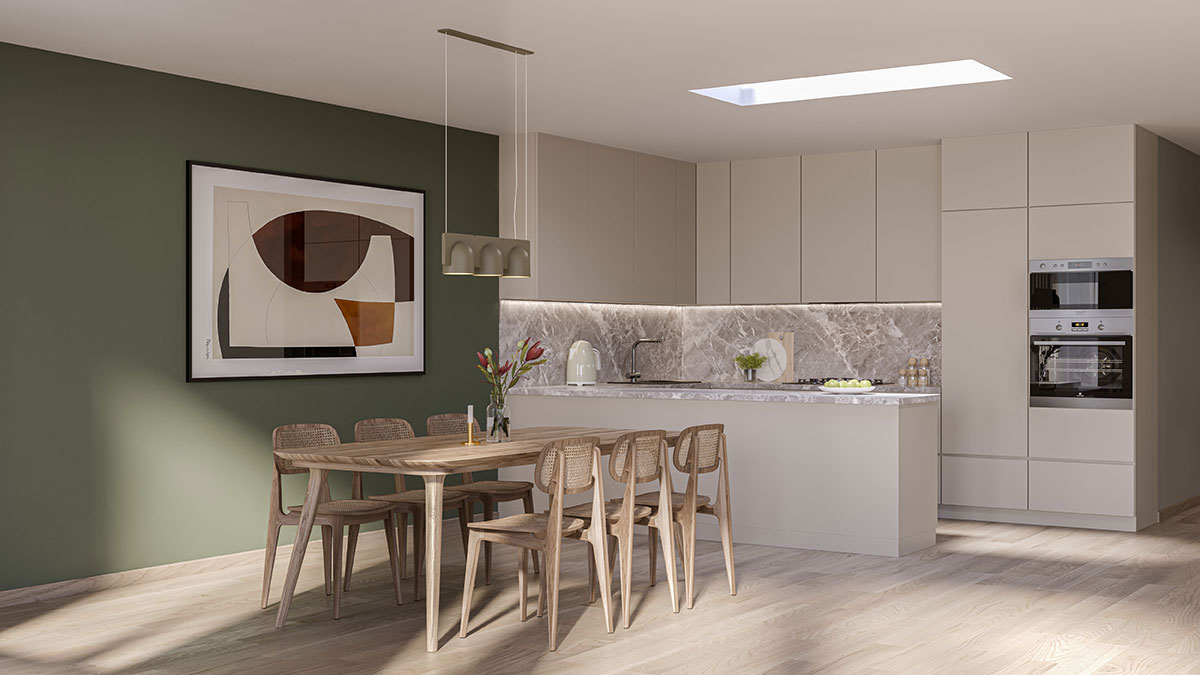 Created by Arqsix
Created by Arqsix
Archviz professionals often find their niche in the creation of real estate marketing films, where they employ their skills to visualize not just the properties but the potential lifestyles that come with them. These films serve as a bridge, presenting the allure of historic neighborhoods or the modernity of new developments, and enabling potential buyers to visualize their futures within these spaces.
Architectural visualizations in this context are about storytelling, connecting clients to spaces through the creative market of visualization.
Crafting Stories Through Visuals
Crafting stories through visuals is an art form where 3D rendering and animation play pivotal roles. Real estate marketing films leverage these tools to differentiate brands and resonate with clients, offering narratives that explore properties in depth.
Narrated house tours, interviews with professionals, and client testimonials enrich these visual stories, building trust and showcasing the firm’s capabilities through compelling imagery and detailed visualizations.
Connecting Clients and Spaces Before They Exist
Archviz serves as a vital conduit between potential clients and spaces that are yet to be built. It enables viewers to preview and emotionally connect with unbuilt environments, often incorporating neighborhood tours that highlight community and amenities. This connection is essential in real estate, where the ability to envision oneself in a space can be the deciding factor for a client.
Boosting Sales with High-Quality Presentations
High-quality visualizations can significantly boost sales by enhancing the aesthetic appeal of a property and justifying its value. Advanced 3D rendering techniques enable realtors to provide detailed overviews that streamline the quoting process and influence customer psychology, thereby leading to an uptick in sales.
The creative market of archviz thus becomes a key player in the real estate industry, shaping how properties are presented and perceived.
Building a Career in Archviz
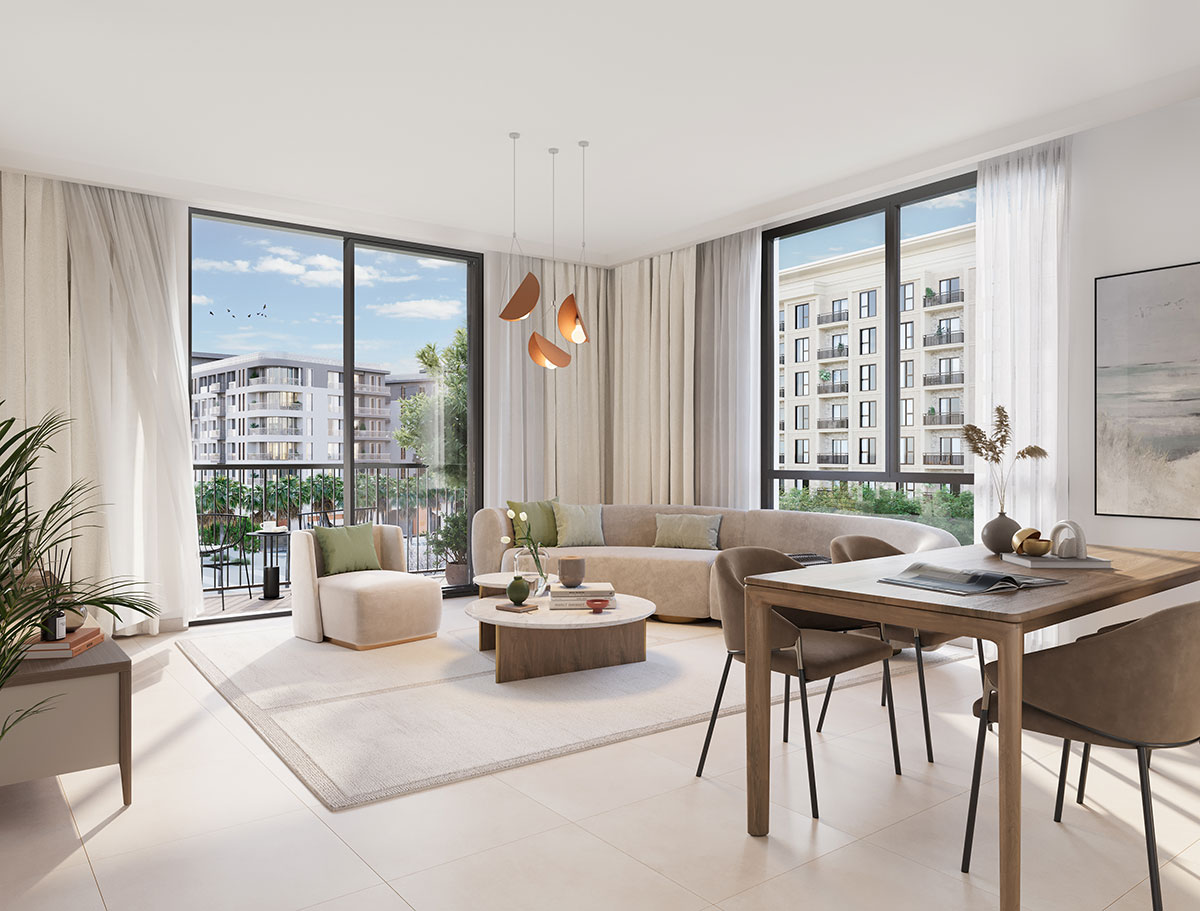 Created by Arqsix
Created by Arqsix
Building a career in archviz requires a combination of technical skill, creative vision, and strategic networking. Aspiring arch viz artists must craft tailored resumes and portfolios that showcase their best work, all while continuously developing their skillset.
The job market for arch viz professionals is dynamic, with platforms like 3D Agora offering a space where clients and artists can connect, providing opportunities that span the globe.
Developing Your Skillset
Developing your skillset in archviz is an ongoing process that involves learning and mastering a variety of software and rendering techniques. Resources such as books on 3ds Max and V-Ray are invaluable for artists seeking to create photorealistic images.
Additionally, personal attributes like self-organization and time management are crucial for maintaining an efficient workflow and pursuing professional growth in the field.
Creating a Captivating Portfolio
A captivating portfolio is essential for arch viz artists looking to attract clients and secure projects. It should be a curated showcase of one’s best work, reflecting the artist’s range and ability to handle diverse visualization challenges. A portfolio must also be clear and focused, highlighting the architectural concepts without unnecessary clutter, to truly capture the attention of potential clients.
Networking and Industry Presence
Networking and maintaining a strong industry presence are key for any arch viz professional. An online presence, through a well-designed website or portfolio, opens doors to opportunities and allows artists to display their work to a wider audience. Additionally, platforms like 3D Agora serve as crucial hubs for connecting artists with clients, facilitating the exchange of services and ideas within the arch viz community.
Innovations in Archviz: Pushing Boundaries
The future of architectural visualization is being shaped by innovations that push the boundaries of creativity and technology. Emerging tools and techniques are set to revolutionize the way architectural designs are visualized and communicated, expanding the creative freedom and capabilities of artists.
As we look ahead, the arch viz industry stands on the brink of a new era, poised to embrace these advancements and redefine the intersection of architecture and digital art.
The Evolution of Animation in Architecture
The evolution of animation in architecture has introduced a new dimension to archviz, elevating the storytelling potential of visualizations. Animation allows architects to breathe life into their designs, showcasing dynamic features and sustainable innovations.
As a tool for inspiration and education, animation is set to play an increasingly significant role in the architectural field, demonstrating the endless possibilities of innovative design.
Virtual Reality: Immersive Experiences in Design
Virtual reality is redefining the architectural visualization process by offering immersive experiences that go beyond static images. VR allows architects and clients to navigate through virtual designs in real-time, providing a level of detail and interaction previously unattainable.
Despite challenges such as hardware limitations and the need for new workflows, VR is poised to become an indispensable tool in the design process.
Real-Time Rendering: The Future is Now
Real-time rendering is rapidly gaining traction in the archviz industry, offering a glimpse into the future of design visualization. This technology allows for:
Instantaneous visual feedback
Facilitating a more collaborative and iterative design process
Bringing new levels of efficiency and interactivity to architectural projects
With a significant portion of architects already incorporating real-time rendering into their workflows, it’s clear that this innovation is transforming the field.
Summary
As we reach the culmination of our exploration into the world of architectural visualization, it’s evident that archviz is more than a mere representation of architectural intent. It is a multidimensional craft that intertwines artistic expression with technical prowess, enabling arch viz artists to bring forth immersive, emotive, and impactful visual narratives. From mastering software and rendering techniques to embracing innovations like VR and real-time rendering, archviz professionals are shaping the future of architecture and design. Aspiring artists equipped with a robust skillset, a captivating portfolio, and an active industry presence will find a vibrant creative market ready for their talents. This ever-evolving field promises a future where architectural visualization continues to break boundaries, forging an inspiring path for those ready to embark on this visual odyssey.